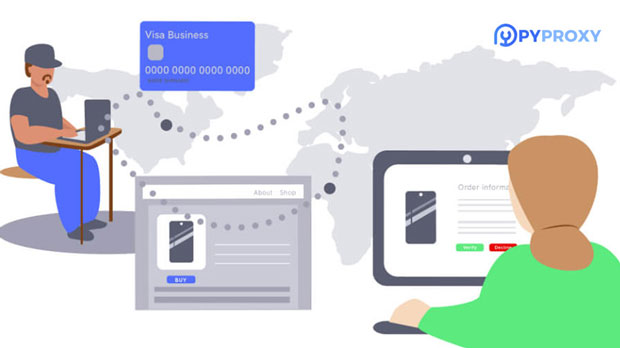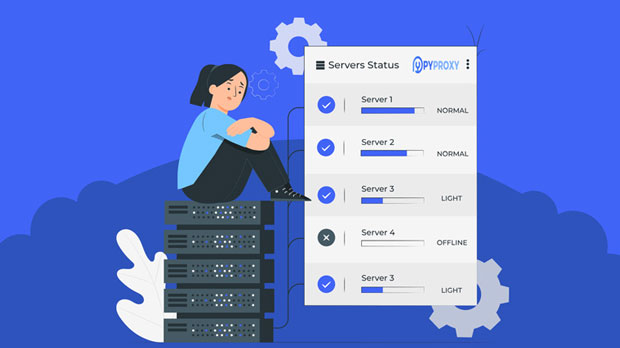When choosing a proxy service, one of the most important considerations is compatibility with various protocols. PYPROXY, a popular Python-based proxy tool, promises versatility and reliability. But does it support HTTP, HTTPS, and SOCKS5 protocols at the same time? Understanding whether Pyproxy offers seamless integration across these protocols is crucial for users who need flexibility in their online activities. In this article, we will explore how Pyproxy works with these protocols, their features, and whether it can effectively handle HTTP, HTTPS, and SOCKS5 simultaneously. Understanding Proxy Protocols: HTTP, HTTPS, and SOCKS5Before diving into the specific capabilities of Pyproxy, it's important to briefly explain the different types of proxy protocols: HTTP, HTTPS, and SOCKS5. These protocols define the way in which data is routed through the proxy server.- HTTP (Hypertext Transfer Protocol): This is one of the oldest and most common proxy protocols used primarily for web traffic. HTTP proxies are designed to route HTTP requests and responses, enabling users to access websites and services without revealing their original IP addresses. However, HTTP proxies do not provide encryption, meaning the data transmitted is not secure.- HTTPS (Hypertext Transfer Protocol Secure): HTTPS is a more secure version of HTTP. It uses SSL/TLS encryption to ensure that the data exchanged between the client and server is protected. This is especially important when sensitive information, such as passwords or financial details, is involved. HTTPS proxies route secure HTTPS traffic, ensuring privacy and security while browsing.- SOCKS5 (Socket Secure version 5): sock s5 proxies offer greater flexibility compared to HTTP and HTTPS proxies. They can route any type of internet traffic, not just web traffic. This includes email, FTP, and even peer-to-peer services. SOCKS5 also supports authentication, providing an added layer of security. Furthermore, unlike HTTP proxies, SOCKS5 proxies do not modify or filter data, making them ideal for privacy-conscious users.Pyproxy Proxy’s Compatibility with HTTP, HTTPS, and SOCKS5Now that we have a basic understanding of each protocol, let’s explore whether Pyproxy can support HTTP, HTTPS, and SOCKS5 at the same time. Pyproxy is a powerful tool built with flexibility in mind, allowing users to manage proxy connections with ease. However, whether it supports all three protocols concurrently depends on how the tool is configured. Support for HTTP and HTTPSPyproxy does support both HTTP and HTTPS protocols. In fact, HTTP and HTTPS proxies are commonly used for tasks like web scraping, browsing anonymously, and accessing geo-blocked content. Since both of these protocols primarily deal with web traffic, Pyproxy is perfectly suited to handle these requests.For HTTP traffic, Pyproxy works by routing requests through the proxy server, ensuring that users’ IP addresses remain hidden. This is particularly useful when users want to access websites without revealing their actual location or identity.For HTTPS, Pyproxy goes a step further by supporting SSL/TLS encryption. This ensures that users browsing secure websites or sending sensitive data over the internet are fully protected. The tool will automatically route HTTPS traffic through the proxy server, ensuring secure communication while maintaining privacy. Support for SOCKS5The SOCKS5 protocol is different from HTTP and HTTPS in terms of its versatility. Pyproxy’s ability to support SOCKS5 allows users to route not just web traffic but also other types of internet traffic. This makes SOCKS5 a more robust option, particularly for users who need to handle P2P traffic, FTP, or gaming data.One of the key advantages of SOCKS5 over HTTP/HTTPS is its support for more applications beyond just web browsing. SOCKS5 proxies can route traffic for various software applications without being limited to web traffic. Pyproxy’s support for SOCKS5 ensures that users can connect to a wide variety of online services while maintaining their privacy.Can Pyproxy Support All Three Protocols Simultaneously?The central question here is whether Pyproxy can handle HTTP, HTTPS, and SOCKS5 protocols simultaneously. The answer is yes, but with certain considerations.1. Multi-Protocol Configuration: Pyproxy can be configured to support multiple protocols at once. It can handle HTTP, HTTPS, and SOCKS5 through separate proxy servers or even on the same proxy server depending on the user's configuration. However, the user must set up each protocol carefully in their Pyproxy configuration file to ensure that all protocols are supported.2. Traffic Routing and Proxy Switching: While Pyproxy can support multiple protocols, it's important to note that each type of traffic must be routed appropriately. For example, HTTP and HTTPS traffic are typically routed through the same proxy server, but SOCKS5 might require a different setup due to its broader capabilities. This can sometimes complicate the configuration process, as users must manage different types of proxy servers or connections.3. Proxy Load and Performance: Running multiple protocols simultaneously can put a strain on the proxy server. If the server isn’t configured to handle high volumes of traffic or multiple protocol requests, performance could degrade. Users should ensure that their Pyproxy configuration is optimized for their specific needs to avoid issues like slow speeds or connectivity problems.4. Security Considerations: Pyproxy’s support for HTTPS and SOCKS5 means that users can ensure their traffic is encrypted and secure. However, when using multiple protocols, users should be aware of the different security implications. HTTP traffic is inherently less secure, while HTTPS and SOCKS5 offer better privacy protections. Users should be cautious about using HTTP proxies for sensitive data or security-critical activities.Best Practices for Using Pyproxy with Multiple ProtocolsTo maximize the effectiveness of Pyproxy when using multiple protocols, users should follow a few best practices:1. Separate Configurations for Different Protocols: It’s advisable to keep HTTP/HTTPS traffic and SOCKS5 traffic separated in the configuration. This allows for better control and troubleshooting in case of issues.2. Optimize Proxy Servers: Ensure that the proxy server is capable of handling multiple protocols simultaneously. This may involve choosing a server with higher bandwidth or using dedicated proxies for different traffic types.3. Monitor Performance: Regularly monitor the performance of Pyproxy when running multiple protocols. This can help detect any issues with traffic routing, speed, or connectivity.4. Use Secure Proxy Options: When dealing with sensitive data, always prioritize HTTPS or SOCKS5 proxies over HTTP proxies. This will provide better security for your online activities.Conclusion: Pyproxy’s Flexibility and CompatibilityIn conclusion, Pyproxy is a versatile proxy tool that supports multiple protocols, including HTTP, HTTPS, and SOCKS5. With the proper configuration, users can run all three protocols simultaneously, but they must ensure the setup is optimized for performance and security. Whether you are looking to anonymize your web browsing, secure your communications, or route diverse types of traffic, Pyproxy offers the flexibility needed to handle these tasks. However, users should be mindful of the performance and security considerations when using multiple protocols at the same time.
Aug 13, 2025






















































